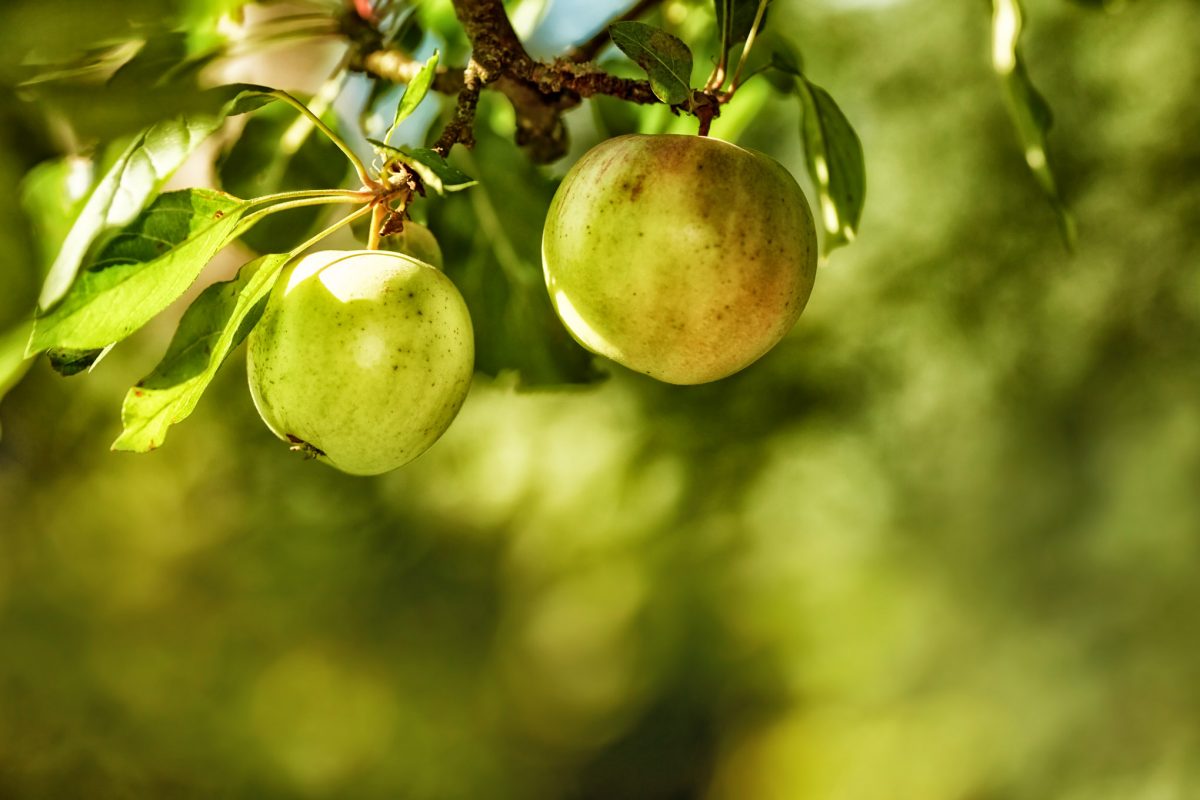For those lucky enough to acquire a property with a thriving orchard, the benefits are obvious in the first year. What’s not immediately clear is all the decision-making and patience that were necessary in the beginning. There’s an old proverb: “The best time to plant a tree is 20 years ago. The second-best time is today.” That certainly applies to fruits. Once established, though, one can expect years of production. Blueberries, for instance, can produce for up to 50 years. Standard apples and pears can be productive for 35 to 45 years. Consider fruits a multigenerational investment.
In addition to being long-lived, fruits are versatile, both in terms of usage and storage capacity. Fruits can be eaten fresh or rendered into jams, jellies, juices, fruit leathers, cider, and wine. They can be frozen, canned, or dehydrated. Some late-season apple varieties like Arkansas Black, Stayman, Pink Lady, and Fuji can keep up to five months if stored in a cool and humid environment.
The Planning Phase
Regardless of which fruits make sense for your situation, some basic homework beforehand will ensure successful establishment. Site selection is important. Vegetable gardens are challenging on sloped terrain, but fruits and slopes are a great fit. Placing fruits on a high point of the landscape allows heavy, cold air to flow past the plants rather than settling right on top of them. Be mindful that south-facing slopes warm up quicker in the winter, which sounds like a positive, but it can also encourage earlier blooming and subsequent damage by late frosts.
Soil testing is always a good idea. Contact your local Cooperative Extension Service about their procedures and fees. Normally, soil testing costs will range from free to $10. The results will give you an indication not only of nutrient needs, but also the natural pH of your soil. A soil pH between 6 and 6.5 will be perfect for tree fruits, strawberries, grapes, and brambles, such as raspberries and blackberries. Blueberries need more acidity, so a pH of 4.5 to 5.2 should be the target. If your score is too low, it can be raised with limestone. If too high, adjustment with sulfur may be in order.

Above: Pawpaw is a native fruit reminiscent in flavor to a banana, but the mushy texture is a turnoff to some.
The number of fruit cultivars is overwhelming, but a good starting point would be to speak with neighbors. What fruits have done well for them? Universities in your state with an agricultural program will periodically publish variety trials for common fruits, and while the list isn’t exhaustive, it can at least provide insight into a handful of varieties that do well. As an example, search online for “Growing blueberries in [your state] .edu.” A lot of first-time fruit growers make the mistake of planting supermarket varieties they’ve enjoyed — think Honeycrisp apples or Bing cherries — even if those aren’t adapted to their region.
Propagation
A seed will contain genetic material from both parents, and as a result, the fruit…
